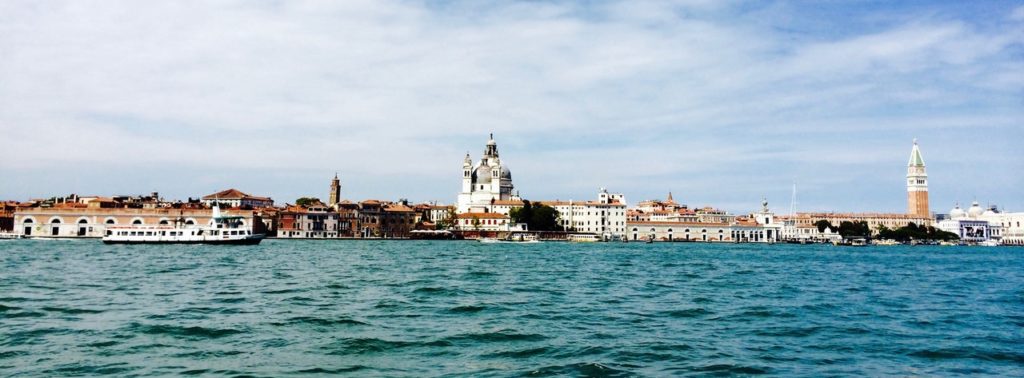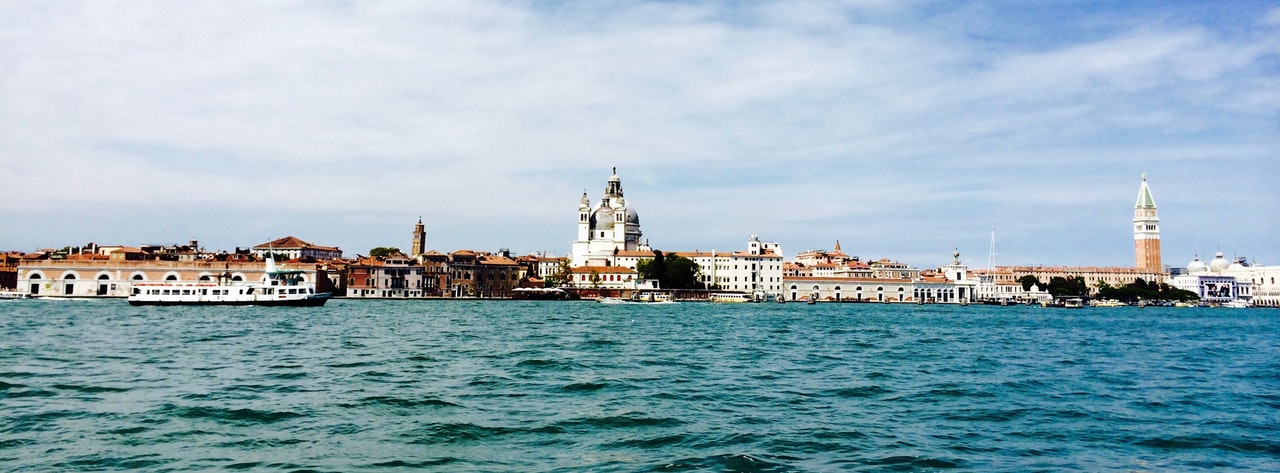
I learned this today. Venice was built on 118 small islands in a marshy lagoon because the people from local Roman cities were fleeing waves of Germanic and Hun invasions.
The city of Venice was founded at noon on Friday 25th March, 421 AD with the dedication of the first church. Construction started possibly five years before then and began when people fled the increasing invasions into Italy.
From 376, the Goths, a Germanic tribe, were forced off their lands by the expanding Huns and they started to move into Roman lands in the Eastern Roman Empire. The Goths started a revolt and the Eastern Roman Empire Valens rode to put them down. He was defeated and the Goths, now called the Visigoths, were given Dacia and Thrace in a peace treaty by the Emperor Theodosius. Theodosius died in 395 and the Visigoths considered the peace treaty to have ended. The Visigoths and the Huns started invading Italy and other European states. The Visigoths started to increase their invasions. The capital of the Western Roman Empire had been moved from Rome in 286 AD to Mediolanum (Milan) and was moved again to Ravenna in 402 because it was more defensible.
Between 408 and 410, the Visigoths besieged Rome, finally sacking it in 410. They captured Roman citizens and ransacked the city. The damage to the actual city was nowhere near as bad as the psychological damage. This was Rome! The city that had ruled the world for over 800 years! The world’s largest empire at the time. The height of culture, technology, and military might. To be sacked was a terrible thing. Confidence in Rome faltered.
This lack of confidence was probably one of the reasons why people in the north of what is now Italy fled to the marshy lagoon that is now Venice. Visigoths and Huns were invading around them. Before, they could rely on Rome to keep them safe, but that faith had been shot. They had to look to their own survival.
People from the Roman cities of Padua, Aquileia, Treviso, Altino, and Concordia, and some of those living in the countryside fled to the marshy lagoon. They began by living on the islands with the local fishermen, who they called lagoon dwellers. The islands were far enough from the land that they were safe from the Visigoths and the Huns. They could be easily defended.
Soon, there were too many people to fit on the islands, so they started to build. The first buildings were made from wood, reed, and clay and were lightweight. They just built on the existing islands. However, as more people gathered, they had to find more space to build and there was nothing for it but to build over the water. The rock under the lagoon is far too deep to use as a foundation, so they had to find another method. Under the water is a layer of hard clay called caranto. All they had to do was drive wooden poles into this layer and they could build on those. The problem is that this layer is not really a layer. It is at different depths in different places. To combat this, all of the poles are different lengths.
Once the poles were hammered into the caranto, or as close as possible, they were cut off at the top to make a flat and “stable” platform. Then buildings would be built on top of this. Because of the different lengths of the poles and the different depths of the caranto, the city is very crooked.
Surprisingly, the wooden poles haven’t rotted, even after over a thousand years. There is no oxygen down in the sludge and the caranto, so microorganisms can’t break down the wood. Also, minerals in the saltwater actually harden the wood. Some wood that was inspected in 1902 had turned to stone.
They also used these poles to hold the water back so that they could make the canals. They used water resistant wood, such as alder, and drove the poles in so close together that the water couldn’t get through. When they had pumped out the rest, they could dig the canal.
As Rome fell, Venice went from strength to strength. However, it wasn’t called Venice until the late 9th century. It became the Republic of Venice. Up until the 15th century, Venice was a powerful naval power and had a small empire. Napoleon ended the Republic at the end of the 18th century and it became part of Italy in 1866.
So, Venice is where it is because it was a safe place for the people living in the north of Italy to flee from the invading Visigoths and Huns. Originally, they lived on the islands that were in the lagoon, but soon had to build to cope with a growing population. They hammered poles into the hard clay under the lagoon to make a foundation to build on. And this is what I learned today.
Photo by Samuel Walker from Pexels
Sources
https://www.britannica.com/place/Venice/In-unified-Italy
https://allaboutvenice.com/how-was-venice-built/
https://en.wikipedia.org/wiki/Sack_of_Rome_(410)
https://www.thetravel.com/how-was-venice-built-on-water/
https://en.wikipedia.org/wiki/History_of_the_Republic_of_Venice
https://whc.unesco.org/en/list/394
https://en.wikipedia.org/wiki/Venice
https://www.venicetoursitaly.it/blog/why-was-venice-built-on-water/

